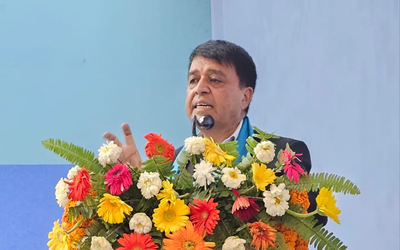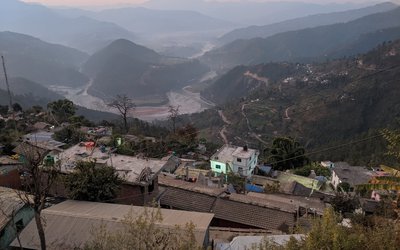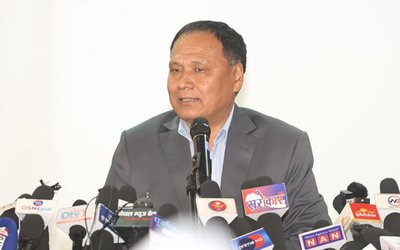
The number of young people of working age in Nepal is currently increasing by 550,000 a year, and by 2020 it will climb to 633,000 a year, a new UNCTAD publication reports. The organization recommends that the new government should rethink its growth strategy to ensure that growth creates employment opportunities for the young people – who are currently largely under-employed, or trapped in vulnerable, low-paid jobs – to improve the growth prospects of the economy.
The Least Developed Countries Report 2013 , subtitled Growth with Employment for Inclusive and Sustainable Development, urges that there should be greater policy emphasis on employment generation as a central development objective. It cautions that otherwise, international migration or social and political instability may rise.
The report says that the so-called Least Developed Countries (LDCs), including Nepal, face a stark demographic challenge, as their collective population – about 60 per cent of which is currently under 25 years old – is projected to double to 1.7 billion by 2050. During the rest of the current decade, such poor countries would have to create around 95 million jobs to absorb new entrants to the labour market, and another 160 million in the 2020s. By 2050, one in four young people worldwide will live in an LDC. The report calls for a break with “business as usual” policies, and a shift toward policies aimed at spurring inclusive growth and the creation of more and better-quality jobs.
The report cautions that while LDCs enjoyed relatively high gross domestic product (GDP) growth rates from 2002 to 2008, this economic progress did not translate into correspondingly increasing levels of employment. Indeed, countries with faster GDP growth created relatively fewer jobs. However, economic growth which does not create decent jobs in sufficient quantity is unsustainable; and job creation without the development of productive capacities is equally unsustainable, the report contends.
The report says that the globe’s 49 least developed countries, a category which includes Nepal, should take steps to improve GDP growth, via the generation of employment, particularly of decent work (work that pays a stable living wage and has safe employment conditions), and via investment to develop productive capacities (the capacities of economies to produce broader varieties of goods, and goods of greater sophistication and higher value). For some years, UNCTAD has argued that improving productive capacities is the best, most stable long-term strategy for helping nations and peoples to escape poverty.
The Least Developed Countries Report includes key figures and trends which show that during the period from 2000 to 2012, employment growth in Nepal was 2.7 per cent per annum – a rate that surpasses the average population growth rate of 1.7 per cent, but has been well below Nepal's average GDP growth rate of 4 per cent in that period. Like many other LDCs, Nepal saw more than a decade of what economists call “jobless growth”.
Most working people in Nepal are employed in the agricultural sector. In 2013, it accounted for 71 per cent of total employment, down from 75 per cent in 2000. Industry accounted for 12 per cent of Nepal's total employment in 2013, an increase of 2 percentage points over the figure in 2000. Services accounted for 17 per cent of employment in 2013, also increasing its share in total employment by 2 percentage points. These figures show that structural transformation has been relatively slow in Nepal.
Economic growth in LDCs has not been inclusive, and its contribution to poverty reduction has been limited, the UNCTAD report says. In addition, this growth has not generated enough “quality” jobs – that is, jobs offering higher wages and better working conditions – especially for young people. In addition, people employed in vulnerable circumstances (those workers without formal work arrangements, decent working conditions, and adequate social security) still accounts for about 80 per cent of total employment in the LDCs.
Creating employment opportunities is critical because it is the best and most dignified route out of poverty, the report contends. It says that the primary employment challenge faced by LDCs is not unemployment, but rather the lack of inclusive growth and productive employment in sufficient volume to help the working poor. This is a major impediment to achieving the United Nations Millennium Development Goals, and to plans to set the LDCs on a sustainable development path.
According a press release of UN Information Center, Finally, the report notes, the LDC population is not only growing rapidly, but is quickly urbanizing. In the case of Nepal, the urban population is currently growing by 3.7 per cent each year, compared with a national average population growth of 1.2 per cent. This combination of factors makes the current decade critical for rectifying the employment situation in LDCs. At the same time as more of the LDC population than ever is entering the labour market, an increasing proportion of that labour force is working, or seeking work, outside the agricultural sector. A major problem with the current process of structural change in LDCs is that it cannot provide the surplus population released from agriculture with productive employment elsewhere, the report notes.
- NEPAL-THAILAND: Joint Business Council
- Apr 13, 2025
- BIMSTEC SUMMIT: Nepal’s Stand
- Apr 11, 2025
- IME GROUP: Expands Into Paper Industry
- Mar 24, 2025
- CPN UML: Instigated By India
- Mar 23, 2025
- ADB’S CHIEF ECONOMIST: Nepal Reduces Poverty
- Mar 11, 2025















